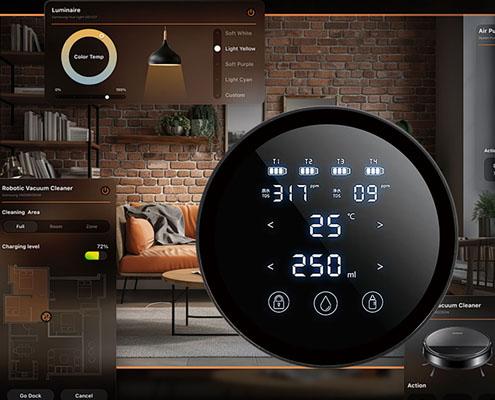Device Integration and Management
A great smart control panel offers seamless integration with different brands and ecosystems. This means controlling products from multiple manufacturers (e.g., Philips Hue for lighting, Nest for HVAC) from one central hub.
Touchscreen Interface
The panel's touchscreen interface should provide a simple and responsive experience. It should allow for quick adjustments to device settings, with an easy-to-navigate layout that groups devices by category (lights, security, temperature, etc.).
Customizable Dashboards
Customization is key for an efficient user experience. A smart home control panel should let you organize and group devices, create personalized dashboards, and set up custom scenes for various moods or times of day.
Voice Integration
Many systems now offer integration with voice assistants like Alexa, Google Assistant, and Siri, enabling hands-free control. The system control panel should support voice commands for quick device interaction.
🌟 Automation and Scheduling
With a system control panel, you can automate tasks like turning lights on at sunset, adjusting the thermostat at certain times, or locking the doors when you leave. Scheduling makes it easier to manage your home, even when you're not there.



